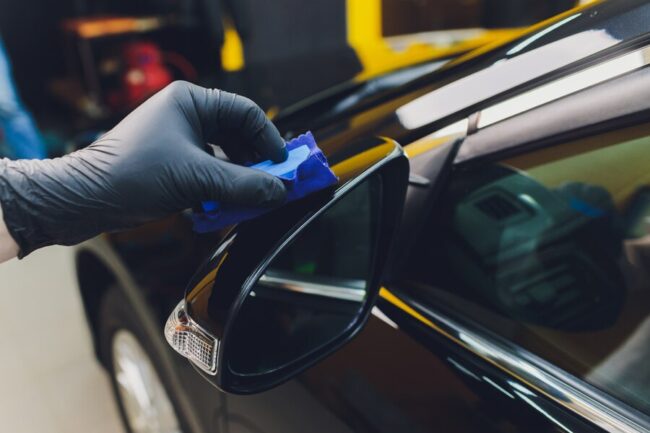As the mercury rises and the sun beats down relentlessly, staying extraordinary becomes more than just a luxury—a necessity. Whether cruising down sun-soaked highways or seeking refuge in your home or office, the scorching heat can take a toll on your comfort and well-being. This is where the magic of window tinting comes into play, offering a shield against the sweltering heat and delivering a refreshing oasis amidst the heatwave.
In this blog, we’ll delve into the cooling benefits of window tinting in hot climates, exploring how this simple yet powerful solution can make a difference in your daily life. From understanding the science behind window tinting to uncovering its remarkable heat-rejection properties, we’ll guide you through the key aspects that make window tinting a game-changer for staying relaxed and comfortable in the hottest environments.
Join us as we embark on a journey to unlock the secrets of window tinting, revealing how this innovative technology can transform your surroundings into a cool, inviting haven even amidst the most scorching summer days.
Understanding Window Tinting
Understanding window tinting involves knowing how it works and the different types available. Window tinting is applying a thin film to windows, which helps reduce the amount of heat, glare, and UV rays entering a vehicle or building. The film is typically made of polyester and can be dyed, metalized, or ceramic. Dyed films are the most affordable but offer less heat rejection, while metalized films provide better heat rejection and durability but may interfere with electronic signals.
Ceramic films are the most advanced, offering superior heat rejection, UV protection, and clarity without interfering with signals. Choosing the correct type of window tint depends on factors like the desired level of heat rejection, UV protection, and budget. Understanding these aspects is crucial for making an informed decision about window tinting.
Different Types Of Window Tint Films Available In The Market
- Dyed Window Tint Film:
-
-
- This type of film is the most affordable option.
- It contains a layer of dye that absorbs solar heat and reduces glare.
- Dyed films can provide heat rejection and privacy but may fade over time.
-
- Metalized Window Tint Film:
-
-
- Metalized films have a layer of metallic particles embedded in the film.
- They offer better heat rejection and durability compared to dyed films.
- Metalized films can also provide improved UV protection and reduce glare but may interfere with electronic signals like GPS or cell phone reception.
-
- Carbon Window Tint Film:
-
-
- Carbon films are a premium option known for their high heat rejection and non-reflective finish.
- They are more durable than dyed films and do not fade over time.
- Carbon films offer good UV protection and reduce glare without affecting electronic signals.
-
- Ceramic Window Tint Film:
-
- Ceramic films are the most advanced and expensive option.
- They contain ceramic particles with superior heat rejection, UV protection, and glare reduction.
- Ceramic films maintain clarity and do not interfere with electronic signals, making them suitable for high-end vehicles and buildings where performance and aesthetics are crucial.
Heat Rejection
Heat rejection is a crucial benefit of window tinting, especially in hot climates. Window tint films are designed to block a significant portion of solar heat from entering a vehicle or building, helping to keep the interior cooler. This is achieved through the film’s ability to reflect or absorb solar energy, preventing it from passing through the glass. The degree of heat rejection varies depending on the type of window tint film used.
For example, ceramic window tint films are known for their high heat rejection properties, offering more excellent protection against heat buildup than other films. Window tinting can contribute to a more comfortable and energy-efficient environment by reducing the amount of heat entering a space, particularly in areas with intense sunlight and high temperatures.
UV Protection
UV protection is a crucial benefit of window tinting. Window tint films are designed to block harmful sun ultraviolet (UV) rays, which can cause skin damage and contribute to the fading of interior surfaces. These films can block up to 99% of UV rays, providing significant protection for occupants inside vehicles or buildings.
This UV protection not only helps preserve individuals’ health by reducing their exposure to harmful rays but also extends the lifespan of interior furnishings, such as upholstery, carpets, and dashboard components, by minimizing sun damage and fading.
Importance Of UV Protection
- Skin Health: UV rays can cause skin damage, premature ageing, and increase the risk of skin cancer. UV protection from window tinting helps reduce exposure to harmful UV radiation, protecting occupants inside vehicles or buildings.
- Eye Protection: Prolonged exposure to UV rays can lead to eye conditions such as cataracts, macular degeneration, and photokeratitis (sunburn of the eye). Window tinting with UV protection helps shield eyes from harmful UV rays, reducing the risk of these conditions.

- Interior Preservation: UV rays can cause fading, discolouration, and deterioration of interior surfaces, furniture, and upholstery. Window tinting with UV
protection helps preserve the interior of vehicles and buildings, extending the lifespan of materials and maintaining their aesthetic appeal.- Comfort: Excessive heat and glare from UV rays can make indoor environments uncomfortable. Window tinting with UV protection reduces heat buildup and glare, creating a more comfortable and enjoyable indoor environment for occupants.
Infrared Rejection
Infrared (IR) rejection refers to the ability of window tinting films to block or reduce the transmission of infrared radiation through windows. Infrared radiation is a type of electromagnetic radiation responsible for the heat we feel from the sun. Window tinting with high infrared rejection properties can significantly reduce the heat that enters a vehicle or building through windows, contributing to a cooler and more comfortable interior environment.
This feature is particularly beneficial in hot climates where excessive heat buildup can be a significant concern. Window tinting films with high infrared rejection also help reduce the need for excessive air conditioning, leading to potential energy savings.
Energy Efficiency
Energy efficiency is a significant benefit of window tinting, particularly in hot climates. By reducing the amount of solar heat entering a vehicle or building, window tinting helps maintain cooler indoor temperatures. This reduced heat buildup can decrease reliance on air conditioning, resulting in lower energy consumption and reduced cooling costs.
Additionally, window tinting can contribute to energy conservation efforts by reducing the demand for energy-intensive cooling systems and lowering carbon emissions and environmental impact. The energy savings achieved through window tinting can be substantial over time, making it a cost-effective and environmentally friendly solution for maintaining comfortable indoor environments in hot climates.
Comfort And Interior Preservation
Comfort and interior preservation are significant benefits of window tinting in hot climates. Window tinting helps maintain a comfortable interior temperature by reducing heat buildup caused by sunlight. This can lead to a more pleasant driving or living experience, especially during the hot summer.
Additionally, window tinting protects interior surfaces and upholstery from fading and sun damage. The film blocks harmful UV rays, which can cause discolouration and deterioration of materials over time. By preserving the interior of vehicles and buildings, window tinting prolongs the life and aesthetics of these spaces, contributing to a more comfortable and visually appealing environment.
Case Studies Or Testimonials
Case Study 1:
Company Name: XYZ Automotive Solutions
Location: Phoenix, Arizona
Testimonial: “After installing ceramic window tint on our fleet of vehicles, we noticed a significant reduction in interior heat buildup, especially during our hot Arizona summers. Not only are our drivers more comfortable, but we’ve also seen a decrease in fuel consumption due to reduced reliance on air conditioning. The UV protection has also helped preserve the interiors, saving us money on upholstery repairs and replacements.”
Case Study 2:
Company Name: ABC Office Buildings
Location: Dubai, UAE
Testimonial: “We installed metalized window tint on our office building’s windows to combat the intense heat in Dubai. The difference has been remarkable—our employees have reported a noticeable reduction in glare and heat, leading to a more comfortable working environment. Additionally, our energy bills have decreased significantly, as we’ve been able to reduce the use of air conditioning without sacrificing comfort.”
Testimonial 1:
Name: Sarah R.
Location: Miami, Florida
Testimonial: “I had ceramic window tint installed on my car’s windows, and I couldn’t be happier with the results. Living in Miami, the sun can be relentless, but the tint has made a noticeable difference in keeping the interior cool. Even on the hottest days, I don’t have to blast the AC as much, saving me gas money. Plus, I love knowing my skin is protected from harmful UV rays.”
Testimonial 2:
Name: John D.
Location: Los Angeles, California
Testimonial: “I run a small business with a storefront in downtown LA. The storefront faces west, and the sun used to make the interior unbearably hot in the afternoon. After installing window tinting, the difference was immediate. Not only is the shop cooler, but our merchandise is also better protected from UV damage. Customers have even commented on how inviting the store feels without the harsh glare.”
Conclusion
Window tinting offers significant cooling benefits in hot climates. Tinted windows help maintain a cooler and more comfortable interior environment in your vehicle or home by reducing solar heat gain, blocking harmful UV rays, and minimizing glare. This enhances your comfort and reduces the need for excessive air conditioning, leading to potential energy savings.
Additionally, window tinting can protect your skin and upholstery from UV damage, extending your vehicle’s or property’s lifespan. With these benefits in mind, window tinting is a practical and effective solution for combating heat in hot climates, providing a more enjoyable and sustainable living or driving experience.




